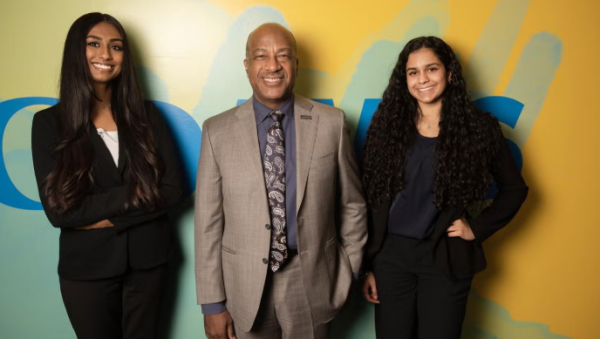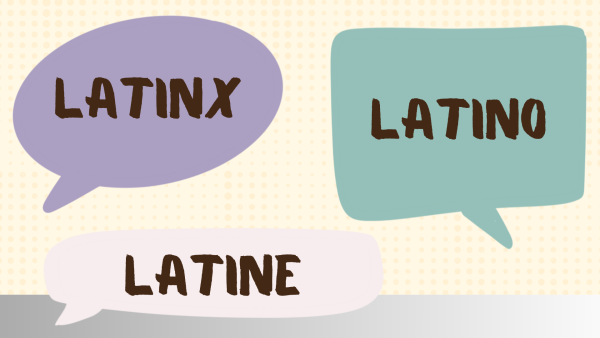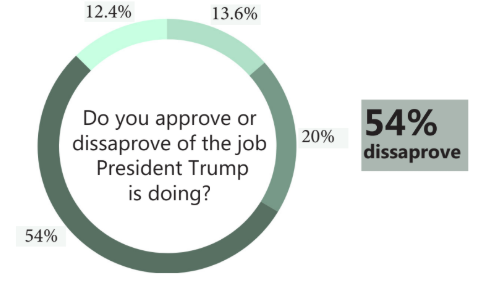Opinion: Who really wins with affirmative action?
SCOTUS’s decision on affirmative action in college admissions is set to release in June 2023.
On Oct. 31, 2022, the Supreme Court of the United States finished hearing arguments for affirmative action in college admissions. Students for Fair Admissions (SFFA) v. Harvard, and SFFA v. University of North Carolina were the two court cases brought against race conscious college admissions that appear to be marking the end to an over 60 year-old precedent.
Historically, affirmative action in college admissions has been used as a way to level the playing field for marginalized groups, namely Blacks, Hispanics and Native Americans. In a country where racial inequality and systemic racism are still prevalent everywhere, the argument for, and thus against, affirmative action will always be made. However, until true racial equality is reached in the US, one side of this battle will always lose.
In SFFA v. Harvard, Harvard has been accused of using subjective rating scales, such as likeability and courage, as a way of discriminating against Asian-Americans. SFFA v. UNC argues that UNC has discriminated against Asian and white applicants by favoring Black, Hispanic and Native American applicants.
The decision is set to release in June 2023. While no confirmation on the decision or leaks of drafts have come out, the conservative SCOTUS is expected by many to rule in favor of SFFA, and completely wipe out race as a factor in college admissions.
The need for affirmative action
In 1996 and 2006, the University of California system and University of Michigan system respectively were forced to stop consideration of race in college admissions.
As a response to this, both school systems poured massive amounts of money into outreach to minority groups in an attempt to maintain diversity at their schools outside of having a racial quota. The University of California system alone has reportedly invested more than $500 million towards this effort since 2004.
“Despite persistent, vigorous and varied efforts to increase student body racial and ethnic diversity by race-neutral means … the admission and enrollment of underrepresented minority students have fallen precipitously (since affirmative action ended) in many of U-M’s schools and colleges,” The University of Michigan system said in a brief.
The University of California system has 2% Black and 25% Hispanic enrollment. The California State University system, which is “required to establish and maintain an affirmative action program”, has 4% Black and nearly 40% Hispanic enrollment.
A diverse student body on any school campus is critical. It opens the door to unique perspectives and backgrounds, a melting pot of cultures and a way to properly prepare students for an ever-increasingly diverse nation.
As evidenced by UC and U-M systems, true racial diversity in a college is impossible to achieve without affirmative action. Over a century of systemic blockades against minorities, specifically Black people, have prevented them from achieving higher education. From segregation to the underfunding of predominantly Black K-12 schools, white people have always had easier access to higher education.
The failings of affirmative action
Granite Bay High School is the natural argument against race-conscious college admissions. Our student body comprises of 60.1% white and 18.2% Asian students. The two biggest racial demographics at our school are seeing the other end of the affirmative action stick – especially Asians.
The dynamic of affirmative action is like a teeter totter: as the admissions of Blacks, Hispanics and Native Americans increase disproportionately to the number of objectively qualified candidates, the number of admitted Asian and white students go down.
In SFFA v. Harvard, SFFA introduces and questions a chart depicting an the rate of admission based on an admission officer’s “impersonal assessment” of an applicant. This chart is not an official depiction of how race plays into Harvard’s admissions; however, during the hearing, Harvard’s lawyer failed to refute this “personal rating” or chart.
The chart has an academic decile and the respective admission rate of a given race for getting in with that number. According to this chart, only 0.9% of Asian Americans with a 4 on the academic decile get accepted to Harvard, contrasted with 12.8% of Black applicants at the same exact decile value.
Then, compare the 12.8% for Black applicants at a decile of 4, to the 12.7% for Asian American applicants at the decile of 10. According to this impersonal assessment of applicants, the chances of a Black applicant getting into Harvard with an academic decile of 4 is higher than an Asian American with an academic decile of 10.
This is the reasoning behind the argument against affirmative action, especially in these two Supreme Court cases. Asian Americans, who are minorities themselves, are being put at a disadvantage for college admissions. An academic achievement of an Asian means less in the eyes of Harvard than for every other race.
Now we’re brought back to GBHS: a school with an incredibly competitive academic culture, with students of all backgrounds pouring their lives into their four years, trying to do the best they can to set themselves up for the future. But should it be fair that an Asian or white student, who had the exact same resources at GBHS as a Black or Hispanic student, be deemed less worthy of being accepted even if they had an equivalent or, even, higher academic prowess?
This is the duality of affirmative action. In practice and generalized to the entire population of the US, it creates more diversified perspectives and moves our society forward towards racial equality. But when the population size is narrowed down to the student body at GBHS, affirmative action only seems to target and harm groups that are otherwise receiving no better treatment or opportunities than their peers.
The solution?
Unfortunately, there is no easy solution, especially not with a black-and-white Supreme Court ruling. No matter which way the decision sways, marginalized groups will have to suffer outside of their control.
Many suggest socioeconomic affirmative action, setting quotas based on income, not race. While this is an objectively fairer policy to both sides, and has shown to contribute positively to the diversity of student bodies, it does not completely solve the problem. According to a study done by the Educational Testing Service in which a simulation was run based on varying degrees of race and socioeconomic affirmative action, the latter barely differed from the level of diversity with no affirmative action at all.
However, by having affirmative action be a decision left to either the SCOTUS or universities, we enforce the idea that a “yes or no” stance on affirmative action should be the final verdict. In reality, this is a small part of a much larger fight against racial inequality and struggle for diversity in the US.
By focusing solely on the decision to be made by the SCOTUS over race conscious admissions, we overlook the only true way to end this debate once and for all: the United States must combat systemic racism, and only when complete racial equality is met, is the argument over affirmative action rendered irrelevant.

Ethan is a senior and Editor of the Sports section. This is his second year on the Gazette staff.














